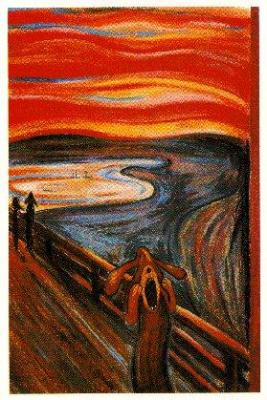-
Posts
327 -
Joined
-
Last visited
Content Type
Profiles
Forums
Gallery
Events
Posts posted by Jaxboat
-
-
Bill et al
You likely do not have the updated instruction booklet. A PDF of the new edition is on the ME website under documents for TH Essex Kit. Eric Snowindicated a printed version will be available soon but you will have to request it from ME.
Best
Jaxboat

-
I believe they have discovered additional issues with the kit. Go to the build log in the forum under kit bashed Essex for more info
Best
Jaxboat
-
Hi Chris
ABBA and 18 year old music selections on an 18 hour drive?
 You truly do suffer for your Art!
You truly do suffer for your Art! 
Amati should give you combat pay!

Best
Jaxboat

PS: Are the wiener dogs going too? They probably like Wagner's Ring Cycle!

-
Hi Sam
Thanks for your follow-up on this issue. I know it has to be frustrating for you
 . I think we are all lucky (Including Model Expo) that Bob was involved in an early build of the kit. I have the kit and it will sit on the shelf until all of the fixes are put into place. I am still looking forward to building it.
. I think we are all lucky (Including Model Expo) that Bob was involved in an early build of the kit. I have the kit and it will sit on the shelf until all of the fixes are put into place. I am still looking forward to building it. 
Best
Jaxboat
-
By any chance did you use any flux?

-
Chris,
Can you share her finished dimensions with us?
Need to start planning the room addition

Seriously, how big is she?
Best
Jaxboat
-
Beautiful model, Chris. Truly a beautiful work of art.
Congrats
Jaxboat

-
-
Some comments on water versus Solvent paint.
Water is winning the marketing battle because of ease of use, performance matching, or at least approaching, that of traditional solvent borne paints and environment and handling issues with solvent. White Ensign Models, who have been the most active in recent years in developing an excellent line of enamels for plastic kits, can no longer ship solvent borne paints to the US unless they ship in large amounts to their US distributor. Formerly they could ship directly to US customers. New rule from the British Post office.
Most folks are moving to "acrylics" as a result of the decline of solvent based paints. Beware, however, that the term "acrylic" is not a catchall. There are many types of acrylics that vary in volatiles (water, solvent , water/alcohol, etc) monomer compostion, molecular weight High, medium, low0, open time, polymerization method (emulsion, dispersion, etc), solvent resitance, solubility in alcohol, modification (e.g., Acrylic urethanes) etc. Each of these variables affect ease of application (especially sprayability), durability, flow and levelling (brush marks or lack thereof ),alcohol solubility, etc. Educating your self about the nature of the acrylic paint you intend to use is a must in my opinion. You do not need to be a polymer chemist but you should know the paint properties (ease of application, dried film properties, etc) that result from the polymer chemist's polymer design. If not directly stated on the label, these properties can be readily determined by applying a sample on a scrap of wood and observing them.
Storage conditions are also important. Water borne paints are very sensitive to cold. Many paints are ruined even at temperature below 45 F but above freezing. Usually, any cheesing effects or unrecoverable change in viscosity indicate a most likely unrecoverable problem . If you bacterially contaminate them they will lose viscosity and smell like rotten eggs. Dilution should only be with deionized water or alcohol water blends as recommended by the manufacturer.
Best
JAXBOAT

-
I totally agree with druxey with one additional suggestion: store them in a cool place
Best
JAX

-
Hope you have as much fun with your build of this beauty as I am having with mine. Based on my experience I really recommend installing the safety temporary timbers between the bulkhead "horns". They are very very fragile
Best
Jaxboat

-
Hi Chris,
Really, beautiful in so many ways
 . Greg is so spot on with his comments. Also, as one of the other members wrote, it would be interesting to follow next steps as Amati works to bring this masterpiece to the market. Your log has generated tremendous interest and it would be a shame to lose the momentum for the "launch" of the kit.
. Greg is so spot on with his comments. Also, as one of the other members wrote, it would be interesting to follow next steps as Amati works to bring this masterpiece to the market. Your log has generated tremendous interest and it would be a shame to lose the momentum for the "launch" of the kit.I guess all you need to do now is figure out how to get the fork lift into the back garden without ruining the verge so you can load the monster onto the van for the trip to Italy.
 That trip will be able to generate an adventure log of its own I am sure.
That trip will be able to generate an adventure log of its own I am sure. 
Meanwhile, I am trying to decide how to break it to my loving wife that I want to build a model that might require a room addition. She is very very supportive of my hobby but this might cross a line in the sand.

Best
Jaxboat

- Rustyj, trippwj and Brigg Fair
-
 3
3
-
I feel honored!

Best
Jaxboat

-
I have the AL Surprise and found all of the comments here to be spot on. You may want to check out other kit manufacturers of the same ship (Mamoli I think). Never did hear why Jotika didn't launch theirs (too many "Surprises" on the market?). The prototype building log is still on their website.
Best
Jaxboat

-
Wow, Just discovered this thread. Great stuff. Very interesting to see where you will start the renovation.
Re: contact cement, I was always fascinated and perplexed why ship modelers used it
 . I believe it is based on rubber and as such subject to oxidation and degradation similar to what you are seeing.
. I believe it is based on rubber and as such subject to oxidation and degradation similar to what you are seeing.RE Admiralty paints: I use them and they brush very well. Haven't tried air brushing them yet. You will find the colors more muted than what you see today based on organic pigments. They are based on inorganic pigments that were available in the 18th century. Jotika initialy overhyped (IMHO) them as authentic which went out the window once they started only selling the water borne versions.
What fabric will you be using for her sail rig?


 :P (the devil made me do it!)
:P (the devil made me do it!) Best
Jaxboat
-
I use q-tips soaked in the appropriate solvent to clean areas like this. Granted, it is laborious but you have good control over the q-tip. This technique can also be used to remove excess adhesive during installation with appropriate debonding solvent.
Acetone will certainly work on body oils but have you ever tried 90%+ Isopropanol? Less volatile and not as nasty as acetone. Perhaps a wee trial on an unobtrusive spot would determine if it works.
Best
Jaxboat

-
The "tar" that was used on sailing ship line came from pine trees. In fact, the industry is still called "Naval Stores" today. The brown black color, people have mentioned is a good description of what it looks like. It certainly isn't jet black like a piece of black thread. It also isn't light stable it must have started degrading instantly after being coated onto the rigging.
Best
Jaxboat
-
Basswood is fairly standard in ME kits. It's biggest problem is it is very soft. It is easy to work on especially sanding as one of the other members mentioned. It also can be readily bent after soaking in water. It stains nicely unless you do not properly clean up excess glue on the surface. That can be easily accomplished by scrapping or rubbing with a q-tip soaked in acetone or Isopropanol depending on what glue you used (CA or PVA). Some folks subtitute better woods for key areas where color or hardness would be beneficial.
Best
Jaxboat

-
Thanks, Druxey
 . I just ordered some via Amazon for the wales on my Confederacy.
. I just ordered some via Amazon for the wales on my Confederacy.Best
Jaxboat

-
-
Awesome work as usual, Greg.
 I know the black leather dye you use for your wales gives an awesome finish but aren't you concerned about the UV stability of the dye?
I know the black leather dye you use for your wales gives an awesome finish but aren't you concerned about the UV stability of the dye?Best,
Jaxboat

-
Sam
Thanks for the update. I admire ME for supporting their product.
 Do you know if thet will be providing customers who already have received their kits with revised instructions/ castings, etc?
Do you know if thet will be providing customers who already have received their kits with revised instructions/ castings, etc?Best
 Jaxboat
Jaxboat -
I sell all kinds of waxes into the personal care market. Beeswax is an incredible mixture of fatty acids manufactured by our amazing little apian buddies. Beeswax is subject to degradation (UV, Oxidation etc). There are other natural waxes such as Carnauba that might be better suited to purpose. I will check into it
Jaxboat
-
The keys are listed by the previous two comments. Make sure the stain is thoroughly dry and sand to provide a surface for mechanical adhesion of the paint. And if you have concerns you can always take a piece of scrap and apply the stain let it dry and sand and then then apply the acrylic paint. If it beads up or "fisheyes" you have a problem. To test adhesion, let it dry thoroughly a few days and then take a piece of painters blue tape press it firmly on the painted piece and pull. Should be little or no loss of adhesion
Jaxboat
- SkerryAmp, avsjerome2003 and Jay 1
-
 3
3




Titanic Sinking Mystry Solved: New Evidence Emerges
in Nautical/Naval History
Posted
LMAO
It was NSA ...again.